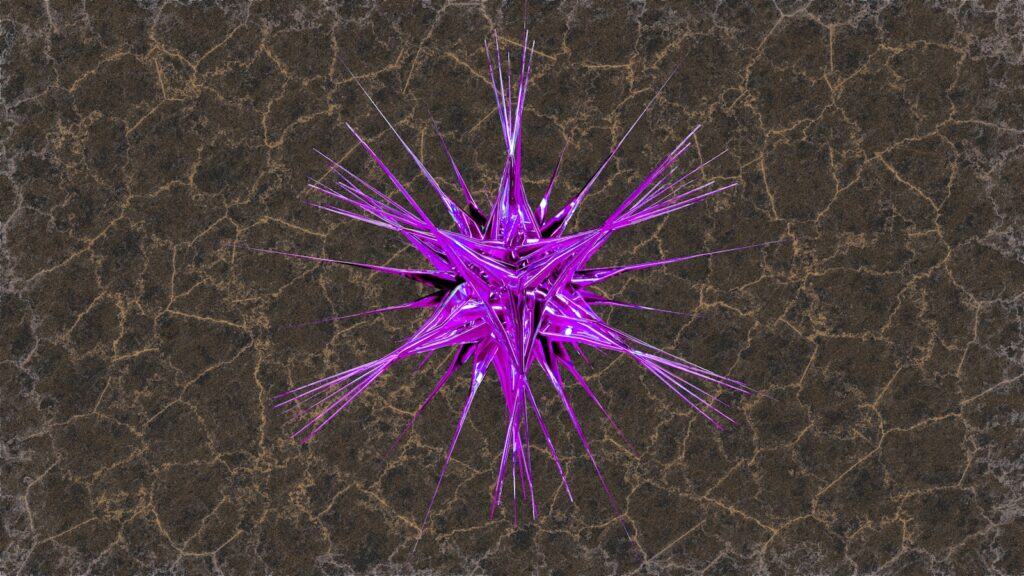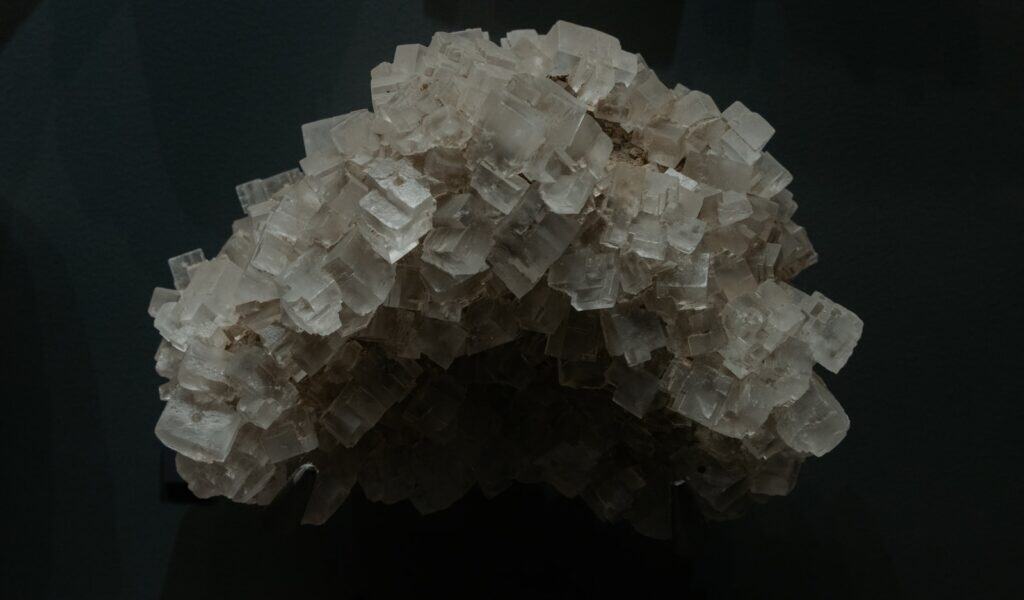Maîtriser les molécules : Une plongée en profondeur dans les principes techniques du contrôle de la cristallisation
Introduction : Un rôle essentiel
Le contrôle de la cristallisation est fondamental pour les industries modernes de la chimie, de la pharmacie et de la science des matériaux. Il sert de pont entre une molécule dissoute et un produit solide final doté d'attributs précis. Cet article propose une analyse technique approfondie des principes et des pratiques qui permettent ce contrôle.
Définition fondamentale
La cristallisation est le processus physique de formation d'un solide avec une structure interne hautement ordonnée à partir d'une solution, d'un produit fondu ou d'une phase gazeuse. Le contrôle de la cristallisation est la manipulation délibérée de cette transition de phase. L'objectif est d'obtenir des caractéristiques cristallines spécifiques et prédéterminées.
Les principaux objectifs du contrôle de la cristallisation sont de dicter les caractéristiques du produit final. Il s'agit notamment de
- La pureté : Isolation d'un composé cible des impuretés qui restent dans la solution (liqueur mère).
- Polymorphisme : Sélection d'une forme cristalline spécifique à l'état solide. Les différents polymorphes ont des propriétés physiques uniques.
- Distribution de la taille des particules (PSD): L'obtention d'une gamme étroite et cohérente de tailles de cristaux. Cela a un impact sur le traitement en aval, comme la filtration et le séchage.
- Morphologie : Contrôle de la forme extérieure des cristaux (par exemple, aiguilles, plaques ou prismes). Cela affecte la fluidité et la densité apparente.
- Rendement : Maximiser la masse du produit solide récupéré à partir de la solution.
Pourquoi c'est important
L'impact d'un contrôle précis de la cristallisation s'étend à de nombreuses industries de grande valeur.
Dans le domaine pharmaceutique, les caractéristiques cristallines influencent directement les performances d'un médicament. La biodisponibilité, la stabilité et la fabricabilité d'un ingrédient pharmaceutique actif (IPA) sont toutes régies par sa forme cristalline. Le cas tristement célèbre du Ritonavir, un médicament antiviral, illustre cette importance. Un polymorphe inattendu et moins soluble est apparu sur le marché. Cela met en évidence l'importance financière et thérapeutique critique du contrôle des polymorphes.
Pour l'industrie des aliments et des boissons, la cristallisation détermine la texture, l'apparence et la durée de conservation. Le tempérage du chocolat en est un exemple classique. Il implique une cristallisation contrôlée des matières grasses du beurre de cacao afin d'obtenir la brillance et le "craquant" souhaités. Une cristallisation incontrôlée entraîne des défauts tels que l'efflorescence de sucre sur les confiseries. Elle provoque également la formation de cristaux de glace dans les aliments surgelés, ce qui dégrade la qualité du produit.
En chimie fine et en science des matériaux, le contrôle de la cristallisation définit les propriétés du produit final. La couleur, l'opacité et la stabilité des pigments sont déterminées par la taille et la forme de leurs particules. De même, la taille et la forme des particules déterminent la couleur, l'opacité et la stabilité des pigments. performance des matériaux avancés repose sur l'obtention d'une structure cristalline spécifique et hautement ordonnée. Cela va des substrats semi-conducteurs aux polymères spécialisés.
Science fondamentale
La compréhension du contrôle de la cristallisation commence par les deux piliers qui le régissent. La thermodynamique fournit la force motrice. La cinétique dicte la vitesse et la voie à suivre.
La force motrice
Le principal moteur thermodynamique de la cristallisation est la sursaturation. Une solution est saturée lorsqu'elle contient la quantité maximale de soluté dissous à une température donnée. Ce point est défini par la courbe de solubilité.
La sursaturation se produit lorsque la concentration du soluté dépasse sa solubilité d'équilibre. Imaginons que l'on dissolve du sucre dans du thé chaud. Lorsque le thé refroidit, il devient sursaturé car la solubilité du sucre diminue. Pourtant, le sucre reste dissous pendant un certain temps.
Cet état de sursaturation n'est pas infiniment stable. La région de concentration située au-dessus de la courbe de solubilité mais en dessous du point de cristallisation spontanée est connue sous le nom de zone métastable (MSZ). Opérer dans cette zone est la clé du contrôle.
La sursaturation peut être générée par plusieurs méthodes :
- Refroidissement : Pour les solutés dont la solubilité diminue de manière significative avec la température.
- Addition d'anti-solvant : Ajout d'un second solvant miscible dans lequel le soluté est peu soluble.
- Évaporation : Élimination du solvant pour augmenter la concentration du soluté.
- Réaction chimique : Lorsque le produit d'une réaction est peu soluble dans le milieu réactionnel.
Le processus en deux étapes
La cristallisation se déroule selon deux étapes cinétiques distinctes et souvent concurrentes : la nucléation et la croissance des cristaux.
La nucléation est la naissance d'un nouveau cristal. Il faut surmonter une barrière énergétique pour former un noyau stable de taille nanométrique. La nucléation primaire se produit dans une solution exempte de cristaux. Elle peut être homogène (spontanée) ou hétérogène (induite par des particules étrangères telles que la poussière ou des imperfections de la paroi du récipient).
La nucléation secondaire est déclenchée par la présence de cristaux existants de la même substance. C'est le mécanisme dominant dans la plupart des cristallisoirs industriels. Il est souvent causé par des collisions cristal-cristal ou cristal-roue.
La croissance cristalline est le processus de maturation qui s'ensuit. Les molécules de soluté de la solution se diffusent à la surface d'un noyau ou d'un cristal existant. Elles s'intègrent dans le réseau cristallin, ce qui entraîne une augmentation de la taille du cristal. Ce processus est généralement limité par la vitesse de diffusion des molécules vers la surface ou par la vitesse de leur intégration dans le réseau.
Nucléation et croissance
Il est essentiel de comprendre l'interaction entre la nucléation et la croissance pour contrôler la distribution finale de la taille des particules. Des niveaux élevés de sursaturation favorisent une nucléation rapide, conduisant à de nombreux petits cristaux. Des niveaux de sursaturation plus faibles favorisent la croissance sur les cristaux existants. Il en résulte des cristaux moins nombreux et plus gros.
Fonctionnalité | Nucléation | Croissance des cristaux |
Facteur déterminant | Supersaturation élevée | Supersaturation faible à modérée |
Ordre cinétique | Ordre élevé (très sensible à la sursaturation) | Ordre faible (moins sensible à la sursaturation) |
Résultat souhaité | Nombreux petits cristaux (si non contrôlés) | Des cristaux moins nombreux et plus gros |
Levier de commande primaire | Refroidissement rapide, agitation élevée, ensemencement | Refroidissement lent, agitation douce, taux d'addition contrôlé |
Impact sur PSD | Élargissement de la distribution (nucléation primaire) | Distribution des rétrécissements |
Stratégies de contrôle de base
La mise en pratique de la théorie implique la manipulation des paramètres du processus pour favoriser la voie cinétique souhaitée. En général, cela signifie que la croissance est préférable à la nucléation.
Contrôle de la température
Pour les systèmes où la solubilité dépend de la température, le profil de refroidissement est un puissant levier de contrôle. Le simple refroidissement d'un réacteur discontinu ne suffit pas à assurer un contrôle précis.
Différents profils de refroidissement sont utilisés pour gérer le taux de génération de sursaturation :
- Refroidissement linéaire : La méthode la plus simple, où la température est diminuée à un rythme constant. Cela conduit souvent à un pic initial de sursaturation et à une explosion de nucléation.
- Refroidissement contrôlé/programmé : Une approche plus avancée où la vitesse de refroidissement est ajustée au fil du temps. L'objectif est de maintenir un niveau faible et constant de sursaturation dans la zone métastable. Cela favorise la croissance plutôt que la nucléation.
- Cristallisation isotherme : La solution est refroidie rapidement jusqu'à une température cible à l'intérieur de la MSZ, puis maintenue constante. Cela permet à la cristallisation de se dérouler à une température constante.
Les vitesses de refroidissement typiques dans les cristallisations pharmaceutiques contrôlées sont comprises entre 0,1 et 1,0 °C/min. Des vitesses supérieures agressives entraînent souvent une nucléation primaire incontrôlée. Il en résulte un produit fin et difficile à manipuler.
Solvant et anti-solvant
Le choix du système de solvants est un élément fondamental décision de contrôle prise à un stade précoce du processus développement. Les principaux critères de sélection des solvants comprennent le profil de solubilité du soluté, la viscosité de la solution, la sécurité du processus et l'impact sur l'environnement.
La cristallisation anti-solvant, ou par noyade, est une technique largement utilisée. Elle est particulièrement utile pour les matériaux dont la solubilité ne dépend pas fortement de la température. Le mécanisme consiste à ajouter un "anti-solvant" miscible dans lequel le soluté est insoluble, induisant ainsi une sursaturation.
Le contrôle s'effectue en manipulant le taux d'ajout de l'anti-solvant et l'emplacement du point d'ajout (pour assurer un mélange rapide). L'efficacité globale du mélange dans la cuve est également importante. Un ajout lent et contrôlé empêche la création de zones localisées de sursaturation très élevée. Cela conduirait à une nucléation indésirable ou à une "sortie d'huile".
Le rôle des additifs
Des traces d'autres substances, ou additifs, peuvent influencer profondément la cinétique et la morphologie de la cristallisation. Ces substances peuvent être classées comme inhibiteurs ou promoteurs.
Les inhibiteurs, tels que certains polymères ou surfactants, s'adsorbent sur les surfaces cristallines et bloquent les sites actifs de croissance. Cela peut ralentir ou même arrêter la cristallisation. Ce principe est utilisé dans les inhibiteurs de calcaire pour le traitement de l'eau. Ils peuvent également être utilisés pour empêcher la croissance d'un polymorphe indésirable.
Les promoteurs, ou "additifs sur mesure", ont une structure similaire à celle du soluté et peuvent se lier sélectivement à des faces cristallines spécifiques. Cette inhibition sélective de la croissance sur certaines faces oblige le cristal à croître plus rapidement dans d'autres directions. Cela modifie sa morphologie finale. Par exemple, nous avons utilisé un additif polymère spécifique pour transformer un cristal en aiguille problématique, à rapport d'aspect élevé, en une forme plus équilibrée, semblable à un prisme. Ce changement a considérablement amélioré les caractéristiques de filtration et de manipulation du produit.
Le pouvoir des semences
L'ensemencement est sans doute la méthode la plus puissante pour obtenir un contrôle cinétique et garantir la reproductibilité d'un lot à l'autre. Elle consiste à introduire une petite quantité de cristaux préformés du produit souhaité dans une solution sursaturée.
L'objectif de l'ensemencement est de fournir une vaste surface pour la croissance des cristaux. Cela permet de contourner l'étape de nucléation primaire, stochastique et difficile à contrôler. Cela permet au processus de fonctionner en toute sécurité dans la zone métastable, en orientant la sursaturation vers la croissance des cristaux d'ensemencement.
Les meilleures pratiques en matière d'ensemencement sont essentielles. Les cristaux d'ensemencement doivent avoir la forme polymorphe souhaitée, une taille bien définie et une distribution étroite. Ils doivent être ajoutés au bon moment, c'est-à-dire une fois que la solution est sursaturée, mais toujours dans la ZMS. La préparation de la suspension de semences est également essentielle pour s'assurer que les semences sont désagglomérées et peuvent être dispersées uniformément dans le lot.
Comparaison des stratégies de contrôle
Le choix de la bonne stratégie dépend des propriétés du matériau, de l'échelle et des attributs souhaités pour le produit.
Stratégie | Variable de contrôle primaire | Avantage principal | Défi commun | Mieux adapté pour |
Refroidissement | Profil de température | Largement applicable aux systèmes dont la solubilité dépend de la température | Peut induire une sursaturation locale élevée si elle n'est pas contrôlée | Produits chimiques en vrac, nombreux produits pharmaceutiques |
Anti-solvant | Taux d'addition et rapport de solvants | Efficace pour les matériaux insensibles à la température | Récupération et recyclage des solvants, possibilité de déshuilage | Chimie fine, cristallisation de protéines |
Évaporation | Taux d'élimination des solvants | Peut atteindre des rendements très élevés | Consommation d'énergie importante, risque d'encrassement des surfaces de chauffe | Sels en vrac (par exemple, NaCl), production à grande échelle |
Ensemencement | Masse, taille et calendrier des semences | Excellent contrôle du polymorphe et du PSD | La préparation et l'introduction des semences peuvent être complexes | Produits de grande valeur (pharmacie), cohérence des lots |
Techniques avancées et PAT
La science moderne de la cristallisation va au-delà des approches traditionnelles basées sur des recettes. Elle s'oriente vers un contrôle en temps réel, basé sur des données, grâce à des analyses avancées et à un traitement continu.
Le défi du polymorphisme
Le polymorphisme est la capacité d'un composé à cristalliser dans plusieurs structures de réseau cristallin différentes. Ces polymorphes peuvent avoir des propriétés radicalement différentes. Il s'agit notamment de la solubilité, de la stabilité et du point de fusion.
Le contrôle du polymorphisme est un défi de plusieurs millions de dollars pour l'industrie pharmaceutique. L'apparition d'un polymorphe plus stable et moins soluble peut rendre un médicament inefficace. Le polymorphe thermodynamique est la forme la plus stable. Cependant, il arrive souvent qu'une forme cinétique moins stable (métastable) cristallise en premier. Ce phénomène est décrit par la règle des étapes d'Ostwald.
Le criblage moderne des polymorphes fait appel à des techniques à haut débit. Un composé est cristallisé dans des centaines de conditions différentes (solvants, températures, taux d'évaporation) afin de découvrir et de caractériser toutes les formes accessibles. Le contrôle est alors généralement obtenu en contrôlant rigoureusement les conditions de cristallisation. Le plus fiable est l'ensemencement avec le polymorphe souhaité.
Cristallisation continue
Un changement de paradigme majeur est en cours : la cristallisation traditionnelle par lots à grande échelle cède la place à la fabrication en continu. Dans la cristallisation en continu, les réactifs s'écoulent dans un système et les réactifs s'écoulent dans un système et les réactifs s'écoulent dans un système. produit s'écoule à un rythme constant.
Les avantages sont considérables. Les cristallisoirs continus fonctionnent en régime permanent, ce qui permet d'obtenir un produit très cohérent et uniforme. Cela élimine la variabilité d'un lot à l'autre inhérente aux processus discontinus non stables. Ils sont également beaucoup moins encombrants. Ils offrent une sécurité accrue en raison de la réduction des stocks de matières dangereuses. Ils permettent un contrôle plus souple et plus précis.
Les configurations les plus courantes sont les cristallisoirs à suspension mixte et à élimination de produits mixtes (MSMPR), qui ressemblent à une cuve agitée. Il existe également des cristallisoirs à écoulement piston (PFC), souvent constitués de longs tubes, dans lesquels les conditions peuvent être modifiées sur toute la longueur du réacteur.
Batch vs. Continu
Les différences techniques entre ces deux approches sont fondamentales pour la conception du processus et la philosophie de contrôle.
Paramètres | Cristallisation traditionnelle par lots | Cristallisation continue moderne |
État du processus | État instable (les variables changent avec le temps) | État d'équilibre (conditions constantes) |
Cohérence des produits | Grande variabilité d'un lot à l'autre | Haute consistance, produit uniforme |
Philosophie du contrôle | Basé sur des recettes (suivant un profil temporel) | Basé sur un modèle (contrôle en temps réel) |
Mise à l'échelle | Difficile et imprévisible | Plus simple et plus fiable |
Empreinte/capital | Grands navires, capital initial élevé | Équipement plus petit, capital potentiellement plus faible |
Le rôle de la PAT
La technologie analytique des procédés (PAT) fournit les "yeux et les oreilles" à l'intérieur du cristalliseur. Elle permet de passer du suivi des recettes à un contrôle en temps réel, basé sur la science. Ces sondes in situ fournissent des données en continu sur les paramètres critiques du processus et les attributs des cristaux.
Les principaux outils PAT pour la cristallisation comprennent
- Mesure de la réflectance par faisceau focalisé (FBRM) : Une sonde FBRM insérée dans le réacteur utilise un laser pour mesurer les longueurs de corde des particules qui passent. Cela permet d'obtenir des données en temps réel sur le nombre et les dimensions des particules. Cela permet un suivi précis des événements de nucléation et de croissance.
- Microscope vidéo à particules (PVM) : Il s'agit d'une sonde vidéo en temps réel qui capture des images haute résolution des cristaux directement dans la boue du procédé. Elle est très utile pour surveiller la forme des cristaux (morphologie), identifier les agglomérations ou détecter les perturbations du processus telles que les vidanges d'huile.
- Spectroscopie par réflectance totale atténuée et infrarouge à transformée de Fourier (ATR-FTIR) : Une sonde ATR-FTIR mesure le spectre infrarouge de la phase de la solution. En suivant la concentration du soluté dissous, elle fournit une mesure directe et en temps réel du niveau de sursaturation. Il s'agit de la principale force motrice du processus.
Étude de cas industrielle
L'étude de cas suivante illustre la manière dont ces principes sont appliqués pour dépanner et optimiser un processus de cristallisation industriel.
Le scénario
Un produit pharmaceutique procédé de fabrication d'un ingrédient pharmaceutique actifLe procédé de fabrication du "composé X" repose sur une cristallisation par refroidissement à partir d'un réacteur discontinu de 2 000 litres. Le processus donne systématiquement un produit qui ne répond pas aux spécifications de qualité.
Le produit final se compose de cristaux très fins, semblables à des aiguilles, avec une large distribution de la taille des particules. Cette mauvaise morphologie entraîne des taux de filtration extrêmement lents. Elle entraîne des temps de séchage longs en raison de l'inclusion de solvants. Elle crée une densité apparente irrégulière, ce qui complique la formulation en aval.
Étapes du diagnostic
Une approche fondée sur les principes a été utilisée pour diagnostiquer la cause première.
- Examiner les données du processus : L'analyse des enregistrements historiques des lots a montré un profil de refroidissement linéaire simple et agressif de 1,5 °C/min. Cette vitesse poussait probablement le processus bien au-delà de la zone métastable. Cela a provoqué un événement de nucléation rapide et incontrôlé.
- Analyser avec PAT : Une sonde FBRM a été installée dans un lot de diagnostic. Les données ont confirmé l'hypothèse, montrant un pic massif et soudain du nombre total de particules peu après le début du refroidissement. Simultanément, une sonde ATR-FTIR a montré une chute précipitée de la concentration de soluté. Cela indique que la sursaturation est générée et consommée presque instantanément dans une explosion de nucléation. Cela a laissé peu de force motrice pour la croissance ultérieure.
- Caractériser le matériau : L'imagerie PVM a confirmé la morphologie en aiguille. Cette forme a été identifiée comme la forme cinétiquement privilégiée. Elle croît rapidement le long d'un axe mais n'est pas souhaitable pour la fabrication.
La solution
Sur la base du diagnostic, une nouvelle stratégie de cristallisation contrôlée a été conçue et mise en œuvre.
- Action 1 (Modifier le profil de refroidissement) : Le refroidissement linéaire agressif a été remplacé par un profil programmé en deux étapes. Une première étape de refroidissement très lente (0,2 °C/min) a été conçue pour amener doucement la solution dans la ZMS. Cette étape a été suivie d'une étape de refroidissement plus rapide uniquement après l'établissement d'une population de cristaux sains.
- Action 2 (mise en œuvre de l'ensemencement) : Pour éviter complètement la nucléation primaire et contrôler la forme des cristaux, un protocole d'ensemencement a été mis en œuvre. Nous précisons que la semence doit être 2% en masse par rapport au rendement du produit final et avoir une taille de particule moyenne de 50µm. Le matériau d'ensemencement, dont il est confirmé qu'il s'agit du polymorphe souhaité, plus équanime, est préparé sous forme de boue et vieilli pendant une heure avant d'être ajouté. Cela permet de s'assurer qu'il est entièrement désaggloméré. La boue de semence est ajoutée au début de la phase de refroidissement lent.
- Action 3 (contrôle et vérification) : Le processus amélioré a été contrôlé à l'aide des mêmes outils PAT. Les données du FBRM ne montrent plus de poussée initiale de nucléation. Au lieu de cela, elles montrent un nombre de particules presque constant, tandis que la taille moyenne des particules augmente régulièrement tout au long du lot. Cela confirme que la croissance se produit sur les cristaux de départ comme prévu. Les images PVM ont confirmé la croissance de cristaux bien définis, en forme de prisme.
Le résultat
La mise en œuvre d'un processus de cristallisation contrôlé et ensemencé a transformé l'opération de fabrication.
Le produit final se compose désormais de cristaux uniformes, en forme de prisme, avec une distribution granulométrique serrée autour de 250 µm. Le temps de filtration a été réduit de plus de 40%. Les cycles de séchage ont été plus courts et plus efficaces. Le lot d'API répond systématiquement à toutes les spécifications de qualité concernant la taille des particules, la densité apparente et la pureté. Il en résulte un processus de fabrication robuste et fiable.
Conclusion : L'avenir est contrôlé
Le contrôle efficace de la cristallisation est une pierre angulaire de la fabrication moderne. Il permet de produire des matériaux de grande valeur avec des attributs définis avec précision.
Principaux enseignements
- La cristallisation est un équilibre délicat entre la thermodynamique (sursaturation) et la cinétique (nucléation et croissance).
- Le contrôle est obtenu en manipulant les variables clés du processus : profils de température, systèmes de solvants, additifs et, surtout, ensemencement.
- Des outils modernes tels que la technologie analytique des procédés (PAT) et la fabrication en continu transforment la cristallisation d'un art empirique en une science précise, fondée sur des données.
- Une approche fondée sur les principes et les données est essentielle pour développer, dépanner et optimiser les processus.
Orientations futures
Le domaine continue d'évoluer rapidement. L'avenir du contrôle de la cristallisation sera façonné par l'adoption croissante de l'intelligence artificielle et de l'apprentissage automatique pour la modélisation prédictive des processus et le contrôle autonome. Nous assisterons également au développement de nouvelles formes solides telles que les cocristaux et de nouvelles techniques de cristallisation de produits biologiques complexes. Enfin, l'accent sera mis de plus en plus sur la durabilité. Cela favorisera l'innovation en matière de solvants verts et de processus de cristallisation à haut rendement énergétique.
- Génie chimique et cristallisation - AIChE https://www.aiche.org/
- Cristallisation pharmaceutique - FDA https://www.fda.gov/
- Cristallisation - Wikipédia https://en.wikipedia.org/wiki/Crystallization
- Technologie des procédés chimiques - ScienceDirect https://www.sciencedirect.com/topics/chemistry/crystallization
- Technologie analytique des procédés - ACS (American Chemical Society) https://www.acs.org/
- Sciences pharmaceutiques - USP (United States Pharmacopeia) https://www.usp.org/
- Normes de fabrication des produits chimiques - ASTM International https://www.astm.org/
- Ingénierie des procédés - NIST https://www.nist.gov/
- Ressources pour l'industrie chimique - Thomasnet https://www.thomasnet.com/
- Enseignement du génie chimique - MIT OpenCourseWare https://ocw.mit.edu/









